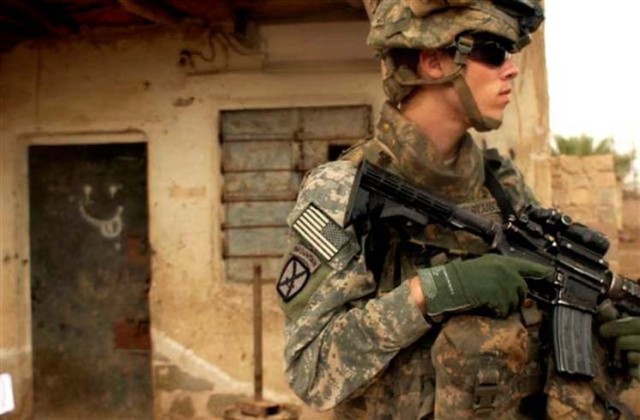After enduring a year of debate on the supremacy of its Interceptor Body Armor in relative silence, the Army is going public to put to rest any doubts that IBA is the best available and that it has out-performed other armor in rigorous testing.
According to Brig. Gen. R. Mark Brown, Program Executive Officer Soldier, the Army had been reluctant to release test results that could inform the enemy of U.S. capabilities. "Right now, we believe it's critical that our Soldiers have confidence in their equipment and that their families know force protection is the Army's number one priority," Brown said. "So it's a balancing act. We have been freed to discuss limited data on body armor testing."
"We provide our Soldiers the best body armor available, bar none. It is live-fire tested and proven in combat," Brown said.
Driving the decision to release May 2006 test data is an assertion by Pinnacle Armor Inc. of unfair treatment. Pinnacle, based in Fresno, Calif., is the manufacturer of Dragon Skin SOV3000 body armor, which Brown said failed "catastrophically" when it was tested by HB White Labs in Street, Md., one of two labs in the nation certified by the National Institute of Justice.
"It failed to stop 13 of 48 [first- or second-round] test shots," Brown said of the testing at H.P. White. "The CEO and vice president of Pinnacle witnessed it. One bullet penetration is cause for failure to meet the Army's standard."
Pinnacle's Dragon Skin SOV3000 body armor was subject to the same fair and independent testing, in a variety of environmental conditions, as products from the six producers of the Army's current body armor. All six of the current producers passed every test with zero failures, which is the standard. In addition to failing ballistic testing, Dragon Skin is also operationally unsuitable because of its greater weight and bulk and compared with the Army's body armor. Depending on size, Pinnacle is 46% to 70% heavier than the current IBA. "We are trying to make the armor lighter, not heavier," Brown said.
Brown said, "We never stop trying to make our body armor and other gear even better. We welcome innovative ideas that offer even better protection, and we will continue to evaluate all viable approaches in open competition and with fair testing that ensures the highest standards."
IBA, the newest generation of multiple-threat body protection, features a modular design with pieces that work together to provide a personal shield against bullets and fragments, including those from improvised explosive devices (IEDs). Protective inserts can withstand multiple small-arms hits. Throat and groin protectors can be attached, and recent upgrades add protection to the upper arm and underarm areas. The overall design greatly reduces the number and severity of wounds.
PEO Soldier designs, produces and fields virtually everything that the American Soldier wears or carries. The organization's Soldier-as-a-System approach ensures that equipment works in an integrated manner, thus preparing our troops for peak performance.


Social Sharing